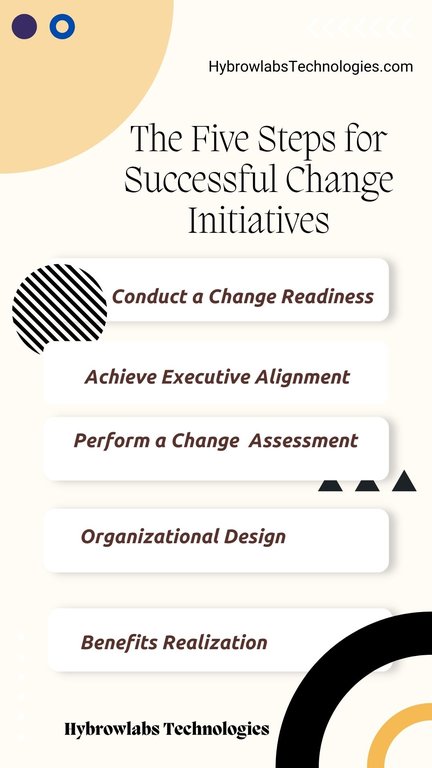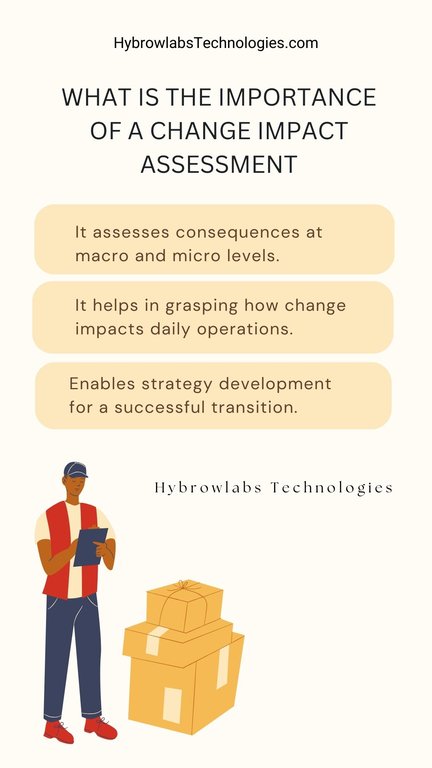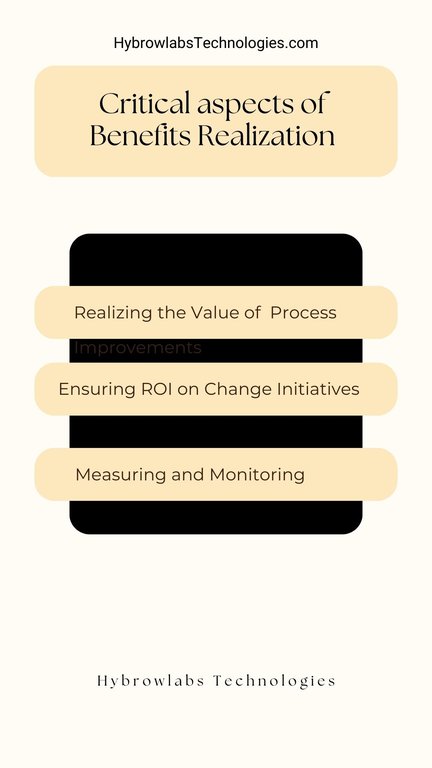A. Definition of Change Management
Change management is a dynamic discipline that involves implementing and managing significant transformations within an organization. It encompasses various strategies, workstreams, and approaches designed to navigate the complexities of change effectively. You can also check our blog on Project Management vs. Organizational Change Management to know more about change management and how it differs from project management.
B. The Complexity of Change Management
Change management is a multifaceted process. It involves alterations in processes, restructuring, introducing new tools and systems, and even shifts in organizational culture. These complexities can be overwhelming and confusing for individuals and organizations undergoing change. Consequently, it's essential to simplify the approach to make it more manageable.
C. The Importance of Simplifying Change Management
In the midst of the vast array of change management tactics, it's critical to streamline the process to make it more accessible and understandable. By doing so, organizations can increase their chances of successful change initiatives.
The Five Most Important Steps for Successful Change Initiatives

We'll delve into the five most pivotal steps to enhance the success of your change management initiatives. These steps are designed to provide clarity, simplicity, and a structured approach to managing organizational change.
Step 1: Conduct a Change Readiness Assessment
A. The Purpose of a Change Readiness Assessment
The first critical step in your organizational change management strategy is to conduct a Change Readiness Assessment. This assessment isn't about determining whether or not you should change but rather understanding how prepared your organization is for change. It's an exploration of potential resistance and hurdles that may arise during the transformation process.
B. Understanding How Ready the Organization Is
A successful change readiness assessment involves evaluating various factors. It considers past change history, the existing culture within the organization, leadership styles, and even management practices. By comprehensively assessing these elements, you can gauge the organization's readiness and identify potential areas of resistance.
C. Anticipating Resistance to Change
Resistance to change is a natural response in any organization. It doesn't stem from malintent but from the fear, uncertainty, and doubt that significant change can bring. It's crucial to acknowledge and anticipate resistance during a change readiness assessment, shifting the question from "Will there be resistance?" to "How and why will there be resistance?"
D. Reframing the Question of Resistance
By reframing the question, you can proactively address and mitigate potential sources of resistance. This step sets the stage for understanding the lay of the land and developing a change strategy that aligns with identified areas of resistance.
Step 2: Achieve Executive Alignment
A. The Significance of Executive Alignment
To navigate change effectively, it's essential to have alignment, particularly among your executives. Alignment means that everyone is on the same page, sharing the same vision and understanding the direction in which the organization is headed.
B. Exploring the Meaning of Alignment
Alignment is more than just an agreement; it's about having a shared perspective on the organization's future. Even in large, complex organizations where misalignment is expected due to diverse personalities and external influences, identifying areas of misalignment is crucial.
C. Addressing Misalignment in Growing Organizations
Consider the case of an organization that rapidly expanded through mergers and acquisitions. While the broad goal was clear, the specifics of what it meant to act as one global company posed a challenge due to executive disagreements. Aligning executives on the vision is vital because misalignment at the top trickles down throughout the organization.
D. The Role of Executives in Shaping Organizational Alignment
Ensuring that your executives are aligned is a pivotal part of your change management strategy. Without executive alignment, the rest of the organization will likely follow suit and remain uncoordinated.
Step 3: Perform a Change Impact Assessment

Change is inevitable in any organization, and it's essential to understand that the impact of change goes far beyond just adopting new processes or technologies. This is where the Change Impact Assessment becomes a vital step in your Organizational Change Management Strategy.
A. The Importance of a Change Impact Assessment
The Change Impact Assessment is crucial because it helps you comprehend the full scope of how the proposed changes will affect your organization, its processes, and, most importantly, your employees. This step involves evaluating the potential consequences of change, both at a macro and micro level, and understanding how it will impact your day-to-day operations.
This assessment is not merely a formality but a necessary tool to foresee potential challenges, develop strategies to address them, and ultimately increase the likelihood of a successful transition. Ignoring the human aspect of change can lead to resistance and hinder your change initiatives.
B. Analyzing Current State vs. Future State
At the core of a Change Impact Assessment is the comparison of your organization's current state to the desired future state. This analysis helps you identify what needs to change, why, and how it will affect different areas within your organization. By examining the discrepancies between the two states, you gain valuable insights into what's at stake and where adjustments are needed.
Understanding the gaps between the current and future states enables you to plan for the necessary modifications in processes, technology, and even company culture. It also aids in setting realistic expectations and goals for your change management efforts.
C. Focusing on Micro-Level Impact
While assessing the broader organizational impact is essential, it's equally crucial to delve into the micro-level impacts of change. This involves scrutinizing how individuals, teams, and departments will be affected. Employees are the backbone of any organization, and their concerns must be addressed.
Micro-level impact assessment enables you to tailor your communication and support strategies for different groups within your organization. It allows you to anticipate questions, uncertainties, and even resistance at an individual level, which can be critical in preventing any disruption to daily operations.
D. Identifying and Addressing Employee Concerns
Change often leads to employee concerns, and these concerns can manifest as resistance, fear, or uncertainty. Identifying these concerns and addressing them proactively is a pivotal part of the Change Impact Assessment. Employees may wonder about the security of their jobs, the relevance of their roles, or how they will adapt to new technologies.
To address these concerns, open and transparent communication is key. Engage with your employees, listen to their worries, and provide them with clear, understandable information about the upcoming changes. Moreover, offering training and support to help employees transition smoothly can go a long way in mitigating resistance.
Step 4: Organizational Design
Change is not just about processes and technology; it's fundamentally about people. Therefore, the Human Aspect of Technological Change cannot be underestimated in your Change Management Strategy. Organizational Design plays a pivotal role in managing this human aspect effectively.
A. The Human Aspect of Technological Change
When implementing technological change, it's easy to become overly focused on the new systems and processes while neglecting the fact that these changes profoundly impact employees. For many individuals, change can be unsettling, as it raises questions about job security, the nature of their work, and their place within the organization.
To address these human concerns, it's essential to consider how employees are affected and recognize that their buy-in is critical for the success of any change initiative.
B. Articulating Job Redesign
Job redesign is a central aspect of managing the human side of change. When implementing new technologies, roles and responsibilities may shift. Employees may find their tasks automated, streamlined, or enhanced. To ensure a smooth transition, it's necessary to articulate what these changes mean for each employee.
Clear communication about job redesign helps employees understand how their roles will evolve and how they can contribute to the success of the organization in the new context. It also fosters a sense of purpose and control, reducing resistance to change.
C. Restructuring Reporting and Collaboration
Organizational change often necessitates a restructuring of reporting hierarchies and collaboration processes. This can be a source of anxiety for employees who may have established routines and relationships in the existing structure.
Proactively addressing changes in reporting and collaboration is vital. It involves explaining the reasons behind these changes, emphasizing the benefits, and providing guidance on how employees can adapt to the new structure. It's essential to make employees feel that they are part of the decision-making process.
D. The Role of Organizational Design in Change Management
Organizational design is the blueprint for how your organization operates. It defines roles, relationships, and communication structures. During a change initiative, it's the tool that enables you to align your organization with the new vision and objectives.
By focusing on organizational design as a critical step, you ensure that your organization's structure supports the intended changes. It also provides clarity to employees about their positions and responsibilities in the new context.
Step 5: Benefits Realization

In the journey of implementing organizational change, reaching the finish line successfully isn't just about achieving initial goals but also about reaping the expected benefits. Step 5, Benefits Realization, is often the culmination of a well-executed change management plan. Here, we explore the critical aspects of this final step in the process:
A. Realizing the Value of Technological and Process Improvements
Organizational change often involves the adoption of new technologies and process improvements. While these changes are made with the intention of enhancing efficiency and effectiveness, it's vital to ensure that these improvements translate into real value for the organization. This includes increased productivity, reduced costs, improved quality, or any other tangible benefits that were initially set as goals. It's essential to monitor and evaluate whether the promised value is being realized.
B. Ensuring ROI on Change Initiatives
Return on Investment (ROI) is a central concern for any change initiative. To ensure that the organization is getting a positive return on the resources invested in change, a meticulous assessment of costs and benefits must be conducted. This evaluation should consider both the short-term and long-term impacts. It's crucial that the benefits outweigh the costs, leading to a positive ROI. If not, adjustments may be necessary to achieve the desired financial outcomes.
C. The Role of Benefits Realization in Successful Change
Benefits realization is a key indicator of the success of your change management strategy. When the organization is not only capable of executing changes but also realizes the expected value from those changes, it signifies that the strategy was well-conceived and effectively implemented. Realizing benefits validates the decision to undergo the change in the first place, reassuring stakeholders and fostering a culture of continuous improvement.
D. Measuring and Monitoring Change Outcomes
To assess benefits realization, organizations need to establish robust measurement and monitoring systems. Regularly tracking key performance indicators (KPIs) relevant to the change initiative is essential. These KPIs should align with the goals set during the planning stages. Continuous monitoring allows for early detection of issues and provides the opportunity to make course corrections if needed. It also aids in maintaining alignment with the organization's overall strategy.
Conclusion
In the world of organizational change management, success isn't determined solely by the ability to implement change but also by the extent to which the anticipated benefits are realized. The process isn't complete until the organization can tangibly measure the improvements, ensure a positive ROI, and adapt accordingly. The five steps we've explored in this article—Change Readiness Assessment, Executive Alignment, Change Impact Assessment, Organizational Design, and Benefits Realization—are interdependent and collectively lay the foundation for a well-structured change management strategy.
Remember, change isn't just about adopting new technologies or processes; it's about enabling the organization to thrive in a dynamic environment. By implementing these five steps, organizations can not only embrace change effectively but also secure the desired benefits that drove the change initiative in the first place. For more details on change management, visit our Hybrowlabs official website.
FAQ
Q1: Why is benefits realization the final step in organizational change management?
Benefits realization is the culmination of a well-executed change management plan. It ensures that the organization not only implements change but also reaps the expected benefits.
Q2: How can organizations ensure they realize the value of technological and process improvements during change initiatives?
Organizations can ensure benefits realization by regularly monitoring key performance indicators (KPIs) related to the changes, assessing costs and benefits, and adapting the strategy as needed.
Q3: What role does Return on Investment (ROI) play in benefits realization?
ROI is a critical consideration in benefits realization. It ensures that the benefits outweigh the costs, resulting in a positive financial outcome for the organization.
Q4: Why is it important to continually measure and monitor change outcomes?
Regular measurement and monitoring help organizations detect issues early, make course corrections, and maintain alignment with their overall strategy.
Q5: How does benefits realization impact the success of a change management strategy?
Benefits realization is a key indicator of a successful change management strategy. When the organization realizes the expected benefits, it validates the decision to undergo the change, fostering a culture of continuous improvement.



05dacf.jpg)


a3dc85.jpg)
.jpg)
fd8f11.png)


.jpg)
.jpg)